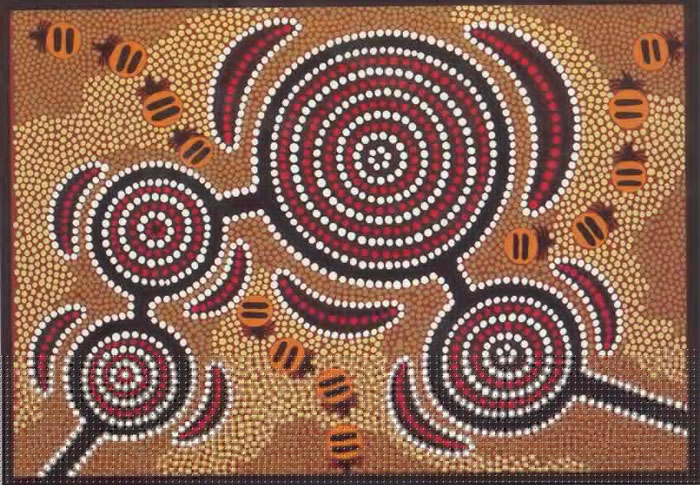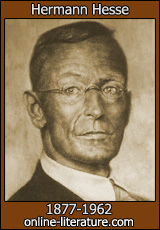
Monday, September 27, 2010
Perseus and Phineas
Not sure if we were supposed to only do book I... or just something that piqued our interest. I read mostly book IV over the weekend and enjoyed the tale of Perseus and Phineas. This story was bloody and violent, along with the confusion of the many names that were slayed. I actually enjoyed the moment when Perseus pulled out Medusa's head to stop the chaos. What was really curious, was why Phineas would even dare attack someone that had slain so many monsters (Perseus) and then constantly retreat? If you have the cajones to stand up and threaten a powerful person, you better have the physical evidence to back yourself up. I suppose there is always a fool in the bunch. 

Wednesday, September 22, 2010
Someone elses P.O.V.- Corrin's
 I just finished reading Corrin's blog and was impressed with her travels to Australia. I will admit that her handprint picture caught my eye at first, but then her story grabbed my entire attention. Never hearing the Rainbow Serpent story before, this made me realize that snakes can be viewed in a non-threatening manner. Corrin's blog also sparked my interest in Aboriginal art and how each piece can tell a story. Thank you Corrin for your interesting and detailed blog.
I just finished reading Corrin's blog and was impressed with her travels to Australia. I will admit that her handprint picture caught my eye at first, but then her story grabbed my entire attention. Never hearing the Rainbow Serpent story before, this made me realize that snakes can be viewed in a non-threatening manner. Corrin's blog also sparked my interest in Aboriginal art and how each piece can tell a story. Thank you Corrin for your interesting and detailed blog."Aboriginal legend tells of a meteor that fell in Palm Valley, which matches signs of a crater on Google Earth" (Sanson, Annie; http://www.heraldsun.com.au/news/breaking-news/google-earth-confirms-dreamtime-meteor-legend/story-e6frf7jx-1225814665715)
Monday, September 20, 2010
Awakening My Memories
"If homoeopathic or imitative magic, working by means of images, has commonly been practised for the spiteful purpose of putting obnoxious people out of the world, it has also, though far more rarely, been employed with the benevolent intention of helping others into it. In other words, it has been used to facilitate childbirth and to procure offspring for barren women". (Frazer 10)
I missed class on Thursday and was unable to hear everyones creation stories. I therefore feel obliged to tell my creation story. According to the Hmong tradition, the Earth was covered in water. On that water floated a yellow drum with a brother and a sister trapped inside. The King above drained the water, freeing the siblings. The brother wished to marry his sister in order to procreate, but the sister refused. The brother made a deal with his sister, " If we both roll stones down this hill and they stack on top of eachother at the bottom, then you shall marry me." The sister reluctantly agreed and they both pushed their stones. The brother wanted to marry her so badly, that he ran ahead of the stones and stacked them when the stones got to him. The sister married her brother and a year later they gave birth to a baby. This baby was born without arms and legs, and was in the shape of a pumpkin. The husband cut the pumpkin shaped baby into many pieces and where the pieces landed became a clan. Each clan was named according to where they landed. The Hmong use creation stories to explain how things came to be and are very fascinating in that aspect. In agreeance with Eliade on ch.7 of Myth and Reality, memory plays a key role in storytelling (myth). His analysis of Indian symbolism reminded me of the book Siddhartha (Herman Hesse). If some of you are not familiar with Siddhartha; its about a man that started off following Buddha and then slowly goes through the trials of life. Without the help of a teacher or master, Siddhartha finds the true meaning of life in a river. This is story is a great example of how selfish thinking and ignorance can blind us from our memory(mnemne), and recollection(anamnesis) can 'awaken' us from our sleep.
If some of you are not familiar with Siddhartha; its about a man that started off following Buddha and then slowly goes through the trials of life. Without the help of a teacher or master, Siddhartha finds the true meaning of life in a river. This is story is a great example of how selfish thinking and ignorance can blind us from our memory(mnemne), and recollection(anamnesis) can 'awaken' us from our sleep.
 If some of you are not familiar with Siddhartha; its about a man that started off following Buddha and then slowly goes through the trials of life. Without the help of a teacher or master, Siddhartha finds the true meaning of life in a river. This is story is a great example of how selfish thinking and ignorance can blind us from our memory(mnemne), and recollection(anamnesis) can 'awaken' us from our sleep.
If some of you are not familiar with Siddhartha; its about a man that started off following Buddha and then slowly goes through the trials of life. Without the help of a teacher or master, Siddhartha finds the true meaning of life in a river. This is story is a great example of how selfish thinking and ignorance can blind us from our memory(mnemne), and recollection(anamnesis) can 'awaken' us from our sleep.Monday, September 13, 2010
A king is crowned....
"Of the supernaturally endowed kings of Loango it is said that the more powerful a king is, the more taboos is he bound to observe; they regulate all his actions, his walking and his standing, his eating and drinking, his sleeping and waking. To these restraints the heir to the throne is subject from infancy; but as he advances in life the number of abstinences and ceremonies which he must observe increases, 'until at the moment he ascends the throne he is lost in the ocean of rites and taboos'" (139 Frazer)
Based on power, a king is forced to observe more rituals. By following these rituals the king has become the embodiment of powerful. His people will not question whether or not he is worthy of his throne. Even today influential people go through the steps and ceremonies that are required of them. Our very own MSU President has been inaugerated into his power. In order to become a recepient, he has gone through a sort of initiation. Much like we discussed in class about intiations and origins, the use of initiation helps us to recall our mythical origins.
Based on power, a king is forced to observe more rituals. By following these rituals the king has become the embodiment of powerful. His people will not question whether or not he is worthy of his throne. Even today influential people go through the steps and ceremonies that are required of them. Our very own MSU President has been inaugerated into his power. In order to become a recepient, he has gone through a sort of initiation. Much like we discussed in class about intiations and origins, the use of initiation helps us to recall our mythical origins.
Saturday, September 4, 2010
Subscribe to:
Posts (Atom)